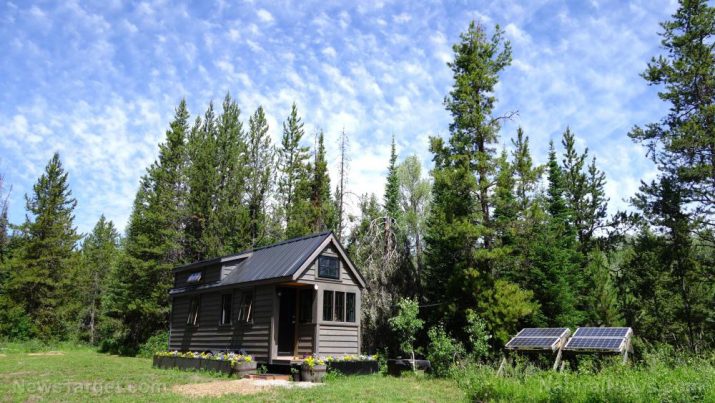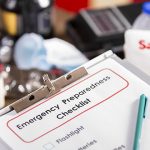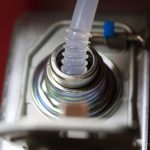
Self-sustainability and independence: A beginner’s guide to living off the grid
Monday, May 24, 2021 by Zoey Sky
http://www.naturalnewstips.com/2021-05-24-self-sustainability-beginners-guide-living-off-grid.html

Going off-grid isn’t a decision preppers make lightly, especially since there are many factors to consider before you can be more self-sufficient.
If living somewhere secluded is one of your goals as a prepper, read on to learn how to prep your own off-grid homestead. (h/t to LivingEtc.com)
Living off-grid is an ideal lifestyle for preppers who value self-sufficiency. By investing in your homestead, you can:
- Generate your own power
- Grow fresh, organic food
- Raise healthy livestock
- Be free from the “connected” systems of society
But for the average adult, these benefits may seem almost impossible to achieve. After all, most families rely on electricity being available whenever they need it and the accessibility of food at restaurants and grocery stores.
If you truly want to live off-grid, you need to start planning now and saving money so you can afford a homestead somewhere peaceful and quiet.
Why live off-grid?
According to Chloe Massey of Indigo & Olive, a company that produces off-grid homes on wheels, even the “light” version of off-grid living “is not for the fainthearted.” Massey said that this lifestyle will take a lot of getting used to and that it’s crucial to steel yourself against any doubts.
Living off the grid benefits your overall health because your home will be somewhere with fresh air, and you’ll be more active as you maintain your property. This lifestyle is also good for the environment, but it also comes with “compromises and drawbacks of cost and practicalities,” added Johnathon Little, founder of Koto Design.
Before you sell your apartment in the city and buy land somewhere in the countryside, asked yourself why you want to go off-grid. Can you cut off all ties with modern life and life a life that’s closer to nature?
Things to consider before going off-grid
While drafting your off-grid plans, think about what you need and want from your new home.
- Do you have land to grow enough food for your whole family?
- Will you be raising livestock?
- Is there a body of water where you can fish?
- Do you plan on hunting to augment your food supply?
- What are your options for a natural power supply?
You also need to figure out how much energy you will need to power your homestead. If you don’t know how to compute this, consult an energy expert who can help you with all the calculations so you know how much energy you will need, how to generate it and at what cost.
Another thing to consider is how to generate energy at your off-grid homestead. Your data should include how much electricity you might need daily and for a whole year. (Related: Tips for setting up an off-grid power system when SHTF.)
Next, decide how you will generate it and how big your battery system needs to be. How you generate energy for your off-grid homestead will vary depending on the location and the resources available.
One common option for preppers is solar power, a very reliable source of power if you’re settling down in sunny, warm climates with prolonged periods of sunshine.
You can calculate how much energy you would get from different photovoltaics (PV) systems wherever you are in the world using the Photovoltaic Geographical Information System (PVGIS). PVGIS is a website that gives detailed information about solar radiation and PV system performance.
PVGIS provides free and open access to PV potential for different technologies and configurations of grid-connected and stand-alone systems. The website also helps users determine solar radiation and temperature as monthly averages or daily profiles.
If you have the resources to do so, get more than one source of power, so you’re not totally dependent on one system working. Things can go wrong when you least expect it and it’s better to have another power source in case it’s cloudy for several weeks and you can’t charge your solar panels, advised Massey.
Tim Pullen, an expert in sustainable building and energy efficiency, agrees. You should have at least two technologies like hydroelectric, solar, or wind power, with a backup system like a petrol generator. You’ll also need a battery bank that can power your home for at least three days if SHTF.
Living off the grid isn’t as easy as just leaving the city and settling down near the woods. You also need to determine if you have the funds to pay for everything you will need to set up your off-grid homestead.
You might have to pay more upfront to install the various technologies, which means you need to be committed to the long-term maintenance of these technologies.
Do you want to be completely off-grid? Or do you plan on using a hybrid setup?
Finding a water source
When choosing a location for your homestead, look for clean water sources near the area.
If that’s not an option, consider digging a borehole for your water supply. You should also factor in the extra electricity you’ll need to pump the water around your homestead.
Alternatively, you can use a rainwater collection system.
Heating your off-grid homestead
Your heating options include:
- Electricity generated from a solar power system
- A wood burner
- A biomass boiler
- A heat pump
Using natural resources at your disposal can help lower the cost and time needed to heat your home, so find a steady supply of wood.
You can also utilize a passive solar home design by properly orienting your windows. Windows or other devices that collect solar energy should face within 30 degrees of true south and shouldn’t be shaded during the heating season by other buildings or trees from 9 a.m. to 3 p.m. each day.
In spring, fall and the cooling season, you should keep windows shaded to avoid overheating. Always keep window glass clean.
Once your homestead is warm, the next step is figuring out how to keep the heat in. When your home is insulated properly and you prevent air leakage, you can minimize the energy needed to heat your home.
Ensuring proper ventilation in your homestead
Keeping your home properly ventilated will keep out harmful pollutants and moisture.
Ventilation is crucial, particularly if you have a small space. While your instinct might be to keep it closed to stay warm and conserve energy, this can be dangerous if you’re using wood burners that may create a build-up of pollutants.
Off-grid waste disposal
You also have to figure out how to properly dispose of the waste you produce. David Hilton, an expert in renewables and energy efficiency, suggests determining where gray water, which includes shower water and bathroom water, and brown water, or toilet waste and contaminated water, will go.
Organic gray water can be piped directly outside and used to water ornamental plants or fruit trees. You can also use gray water to irrigate vegetable plants, but don’t let it touch edible parts of the plants.
When setting up a gray water system, use plant-friendly products without tons of boron, chlorine bleach, or salt since a build-up of salt and boron in soil can damage your crops.
Meanwhile, brown water might require an organic macerator, which also needs to be powered.
For your toilet options, are you going to use a composting toilet and a septic tank? Or do you prefer an outhouse, an electric incinerator toilet, or a simple honey bucket?
As you can see from the long list of things you have to plan for and purchase, off-grid living isn’t something you do lightheartedly. Save up for your off-grid homestead, choose a suitable location and consider all the factors above before you start your journey to self-sustainability.
Sources include:
Tagged Under: Tags: alternative energy, green energy, green living, homesteading, off grid, preparedness, prepper, prepping, prepping tips, self sufficiency, self-sustainability, SHTF, survival, survivalist, sustainable living
RECENT ARTICLES


Why emergency preparedness must be a crucial part of your survival plan

Portable heater fuel: Is kerosene better than propane?

Survival first aid: How to treat snake bites

Understanding prepper speak: Important acronyms and definitions
By Zoey Sky
COPYRIGHT © 2017 NATURAL NEWS TIPS


